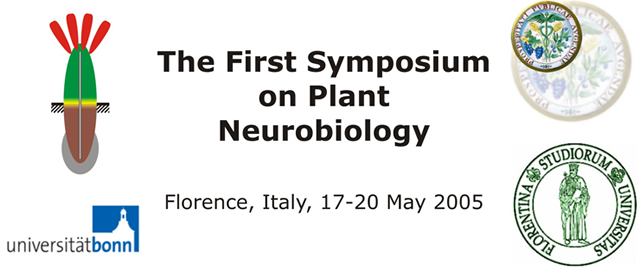1 Department. of Botany, University of Toronto , 25 Willcocks Street , Toronto ON ,
Canada M5S 3B2
2 Institute of Biology, Leiden University , Clusius Laboratory, Wassenaarseweg
64, 2333 AL Leiden , The Netherlands
3 Present address: Department of Biological Sciences,
University of Alberta , CW-405 Biological Sciences building, Edmonton AB , Canada T6G 2E9 |
|
In
leaves, vascular strands of distinct hierarchical orders are organized in closed (i.e. connected) networks.
Vascular networks are generated de novo during the development of each leaf primordium. Procambial cells, the
precursors of all vascular cells, differentiate from preprocambial cells, which represent a molecularly
defined subset of ground meristem cells in the leaf (1).
Mechanisms integrating aligned cell
differentiation during vascular strand formation were probably not reinvented in the evolution of leaves, but
recruited and revised by leaf-specific controls. In addition, species-specific cues are likely to be involved
in leaf vascular patterning, as shown by the successful use of species-specific leaf vascular patterns as
taxonomic diagnostic features (2). Whereas most dicot leaves show a ramified pattern of progressively branched
veins, most monocot leaves have striate venation patterns in which major veins lie parallel along the
proximodistal axis of the leaf and are connected transversely by minor transverse veins (3).
Auxin
signals have a profound impact on vascular patterns of dicot leaves. Local auxin application induces the
formation of a new vascular strand (4). Further, both defective auxin signal transduction and impaired auxin
transport alter leaf vascular patterns in characteristic ways (5-8), and positions of leaf procambium
formation are foreshadowed by sites of elevated auxin response (9).
The reduced auxin sensitivity of
monocot leaves (10), and their highly reproducible distribution and arrangement of veins (3) suggest that
vascular patterns in monocot leaves may be rigidly specified. Recent pharmacological and genetic evidence
suggest, however, a role for auxin transport and signal transduction in vascular patterning of monocot leaves
(11,12).
- Scarpella E, Francis P, Berleth T. 2004. Stage-specific markers
define early steps of procambium development in Arabidopsis leaves and correlate termination of vein formation
with mesophyll differentiation. Development 131:3445-55.
- Klucking EP. 1995. Leaf
venation patterns. Berlin , Germany : J Cramer.
- Nelson T, Dengler N. 1997. Leaf
vascular pattern formation. Plant Cell 9:1121-35.
- Sachs T. 1989. The development of
vascular networks during leaf development. Curr Top Plant Biochem Physiol 8:168-83.
-
Przemeck GKH, Mattsson J, Hardtke CS, Sung ZR, Berleth T. 1996. Studies on the role of the Arabidopsis gene
MONOPTEROS in vascular development and plant cell axialization. Planta 200:229-37.
- Hardtke CS, Berleth T. 1998. The Arabidopsis gene MONOPTEROS encodes a transcription factor
mediating embryo axis formation and vascular development. EMBO J 17:1405-11.
- Mattsson J,
Sung ZR, Berleth T. 1999. Responses of plant vascular systems to auxin transport inhibition. Development
126:2979-91.
- Sieburth LE. 1999. Auxin is required for leaf vein pattern in Arabidopsis.
Plant Physiol 121:1179-90.
- Mattsson J, Ckurshumova W, Berleth T. 2003. Auxin signaling
in Arabidopsis leaf Vascular development. Plant Physiol 131:1327-39.
- Wenicke W, Brettell
R, Wakizuka T, Potrykus I. 1981. Adventitious embryoid and root formation from rice leaves. Z Pflanzenphysiol
103:361-5.
- Scarpella E, Boot KJM, Rueb S, Meijer AH. 2002. The procambium specification
gene Oshox1 promotes polar auxin transport capacity and reduces its sensitivity towards inhibition.
Plant Physiol 130:1349-60.
- Scarpella E, Rueb S, Meijer AH. 2003. The
RADICLELESS1 gene is required for vascular pattern formation in rice. Development 130:645-58.
|

